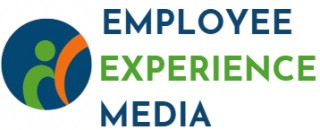
Understanding the Adult Workplace Environment
Understanding the Dynamics of the Modern Office
The adult workplace environment has evolved significantly over the years, shaping itself alongside the cultural and technological shifts observed globally. As societies progress, so do offices, becoming complex yet rewarding spaces where diverse individuals converge. In the United States, the adult workplace is characterized by a blend of various demographics including ethnicity, gender, and age, each contributing unique perspectives and skills.
The characteristics of an effective workplace environment extend beyond the physical confines of an office. Measures ensuring a supportive and inclusive space benefit all workers—men, women, full-time employees, and remote workers alike. The workplace today thrives on diversity, as more organizations recognize the advantages of employing Black, Hispanic, Asian, and other ethnic minorities alongside their White counterparts. This melting pot of backgrounds enriches team dynamics and promotes innovative solutions to projects.
Noteworthy is the growing prominence of young adults in the workforce, bringing fresh ideas but also unique challenges. Companies often balance their needs by offering comprehensive training programs tailored to develop skills pertinent to the fast-evolving job market. Surveys featuring employees highlight that tailored training and continuous professional development are valued, leading to improved satisfaction and productivity.
Moreover, with competitive pressures mounting, environments that prioritize health and well-being tend to see better overall performance. This aspect ties into how companies measure the effectiveness of their workplace strategies, including the integration of diversity strategies to boost morale and output.
For small businesses and larger corporations alike, understanding company obligations to employees is crucial in fostering a productive and stable work environment. Employment policies that consider the various facets of adult workers' lives, such as flexible working hours and mental health resources, not only benefit the individual but the organization as a whole. This focus on balance between professional and personal life echoes across many of the elements covered in subsequent sections of this article.
In sum, a well-managed adult workplace encompasses a vast array of factors that resonate with diverse employee needs while aligning with broader organizational goals. To further explore these obligations and how they shape workplace environments, interested readers may find more insights here.
The Role of Communication in Employee Experience
Influence of Communication on Employee Dynamics
Effective communication acts as a cornerstone of a productive workplace environment, greatly influencing the employee experience. In the adult workplace, the ability to clearly convey information, understand nuances, and appropriately address issues can transform the dynamics of work engagement. Communication thrives on understanding the diverse backgrounds of workers, including different ethnicities such as Hispanic, Asian, Black, and White. Acknowledging these distinctions and adjusting communication styles accordingly enhances mutual respect and collaboration. Moreover, surveys have shown that employees, especially young adults, place high value on transparent communication from their leaders, which can foster a sense of inclusion and well-being. The challenges of navigating communication in fast-paced job settings only emphasize the need for tailored training programs. A well-structured training initiative can equip employees with tools to manage communication challenges effectively, especially in environments where both remote workers and full-time on-site employees interact. Additionally, understanding communication dynamics is crucial when addressing sensitive topics like gender, ethnicity, or organizational measures for employee well-being. For example, ensuring that female employees and workers from minority backgrounds feel heard and valued requires an empathetic approach. Communication also plays a pivotal role in balancing professional and personal growth opportunities. Open dialogues about career development and work-life balance aid in crafting a fulfilling work experience for employees. While technology, as discussed in later sections, can simplify some communication processes, it is the human connection that truly elevates the quality of interaction in the workplace. Explore more on managing these intricate communication challenges by visiting our dedicated resource.Diversity and Inclusion: Key Elements of a Positive Workplace
Fostering Inclusivity and Embracing Diversity
In an adult workplace environment, diversity and inclusion are cornerstones that define workplace harmony and productivity. Various characteristics such as gender, ethnicity, and age play pivotal roles in shaping employee experiences. The modern workplace often includes a blend of black, Hispanic, Asian, and white individuals, along with diverse gender identities and young adults. To create a truly inclusive environment, organizations must adopt comprehensive measures that address the unique needs of their workforce. This includes understanding diverse cultural backgrounds and acknowledging the barriers that different groups may face in the workplace.Benefits of a Diverse and Inclusive Environment
A diverse and inclusive workplace is not just a "good thing" for employees but also enhances the overall productivity of the company. Studies suggest that inclusive environments foster creativity, encourage different perspectives, and ultimately drive innovation. Employees who feel represented and respected are more likely to be engaged and committed to their jobs. Organizations in the United States are increasingly implementing training programs that focus on inclusivity and diversity. Such initiatives ensure that all employees, regardless of their background, feel valued and supported. Training needs to address gender issues and provide equal opportunities for both men and women, while also accommodating the needs of individuals from different ethnic backgrounds.Addressing Challenges Through Effective Training
Diversity and inclusion come with their set of challenges, but through tailored training programs, workplaces can address these effectively. Conducting regular surveys to gather employee feedback is another effective way to identify areas of improvement. Training programs should also emphasize empathy and understanding, equipping employees with the skills to work collaboratively in a diverse environment. As remote work becomes more prevalent, understanding the dynamics of remote workers and how they experience inclusivity is crucial.Embracing Equity
An important aspect of fostering inclusivity is ensuring equity across the workforce. Measures to improve workplace equity often go hand-in-hand with diversity initiatives, and using tools such as workplace equity software can be instrumental in achieving this balance. Striving for a harmonious balance between professional growth and diversity, organizations can create an environment that supports all employees—from young workers to seasoned professionals—and caters to their physical and mental well-being. By adopting these strategies, businesses can progress towards a truly inclusive workplace where every worker feels a sense of belonging.Balancing Professional and Personal Growth
Harmonizing Career Development and Personal Life
In the modern adult workplace, striking the right balance between professional obligations and personal growth can be daunting. The fast-paced nature of today's work environments often leaves workers feeling stretched. For many adults, particularly those employed in full-time positions, the concept of balancing job responsibilities with personal time can seem idealistic. Studies show that employees who are able to maintain this balance are generally more satisfied with their roles. However, achieving this equilibrium often requires a combination of conscious efforts and supportive workplace policies.- Flexible Work Arrangements: Implementing flexible hours or remote work options allows employees to better manage their time. For workers, particularly women and young adults in the United States, having the option to tailor their work schedules around personal commitments can be a game-changer.
- Training and Development Opportunities: Encouraging continuous learning helps adults expand their skills, but it also requires adequate time allocation. Offering training programs that fit well within employees' schedules shows a commitment to their professional development.
- Promoting a Healthy Work Culture: A workplace that values health and human services can help employees achieve personal goals without compromising their professional duties. Departments that invest in physical and mental well-being contribute to a more positive work environment.
The Impact of Technology on the Adult Workplace
The Digital Transformation of Work
The adult workplace is undergoing a significant transformation, largely driven by technological advancements. This shift has reshaped how employees interact, collaborate, and perform their tasks. Technology has introduced new tools and platforms that facilitate remote work, allowing employees to connect from anywhere, thus broadening the scope of the workplace environment.
Adapting to New Tools and Platforms
For many workers, especially young adults entering the workforce, adapting to these new tools is a crucial part of their job. Training programs have become essential in helping employees, regardless of their ethnicity or gender, to navigate these changes effectively. The fast-paced nature of technological advancements means that continuous learning is necessary to keep up with the demands of the modern workplace.
Impact on Work-Life Balance
While technology offers flexibility, it also blurs the lines between professional and personal time. Employees often find themselves working beyond the traditional hours per week, which can affect their well-being. Companies need to implement measures to ensure that the integration of technology does not compromise the health and human services aspects of employment.
Challenges and Opportunities
Technology presents both challenges and opportunities for small businesses and large corporations alike. Remote workers, for instance, benefit from the ability to work from home, but they may also face isolation. Employers must create inclusive environments that support diverse groups, including women, black, Hispanic, and Asian employees, to foster a positive workplace culture.
Surveying Employee Sentiments
Conducting regular surveys can help organizations understand how employees perceive the impact of technology on their jobs. These insights can guide the development of strategies that enhance employee experience, ensuring that technology serves as a good thing rather than a source of stress.
Strategies for Enhancing Employee Well-being
Fostering a Supportive Environment for Employee Well-being
In the modern workplace, the well-being of employees is a crucial element influencing job satisfaction and productivity. Recognizing the importance of both physical and mental health in the adult workplace is essential, considering employees often juggle personal and professional commitments. By implementing strategies to enhance well-being, organizations can foster a supportive workplace environment, which ultimately benefits everyone involved.
One of the first steps in promoting employee well-being is understanding the diverse needs of workers, including young adults who may be starting their careers, and more experienced individuals navigating career changes. Diversity and inclusion play significant roles in ensuring that different ethnicity, gender, and personal backgrounds are respected and accommodated. Companies need to adopt flexible work arrangements, such as allowing remote workers or offering part-time options, which can help in managing the hours week effectively.
Promoting mental health initiatives is another critical measure. Surveys have shown that training programs focusing on stress management and resilience can significantly improve the overall morale of employees. Such programs, when integrated into the company's human resources policies, empower employees to take charge of their mental health and seek support when necessary.
Moreover, companies can enhance employee well-being by encouraging a healthy work-life balance. Creating an atmosphere where taking time off is a good thing and not stigmatized ensures that workers are not overburdened, reducing burnout risks.
Meanwhile, small businesses and larger enterprises alike can benefit from establishing workplace wellness committees that bring together representatives from various departments. Such committees can spearhead initiatives to measures workplace satisfaction and implement tailored interventions, addressing both potential health concerns and improvements in the workplace dynamics.
As technology continues to evolve, employers should focus on how technological tools can be leveraged to streamline processes, allowing employees more time to focus on personal growth initiatives and less on repetitive tasks. Ensuring that workers are appropriately trained to use these tools can empower them, leading to a more efficient work environment.
In the end, enhancing employee well-being is a multifaceted endeavor that requires a commitment from all levels of an organization. Building a supportive work culture where each employee feels valued and respected for their unique characteristics can bridge the gap between employee satisfaction and organizational success.













